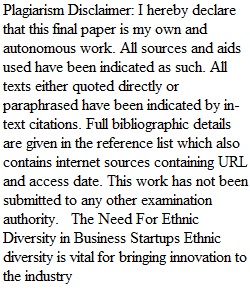


Q Final Draft of Research Paper Course Spanning Task Guidelines: Length: The research paper should be at least 8 full pages long (Times New Roman 12, double-spaced, 1-inch margins both left and right). The required 8-10 pages do not include the front matter (title page, abstract), or the References page(s). If your paper is 8 pages, the 8th page must be full. Sources: The research paper should incorporate a minimum of 8 research-quality references. See Category 2.1 in the rubric (Evidence) for more details, and consult the Research Quality Standard guide for more on what constitutes high-quality research materials; Style: The research paper should conform to the APA format in all aspects, including page guidelines, section titles, headings, and citations. Refer to the PACS APA Style Guide. Composition: The research paper should exhibit the structure and literary style of a scholarly journal article. This includes precise language (rather than colloquialisms and hyperbole), a neutral and respectful tone, and structural coherence. See Category 3 in the rubric (Mechanics and Style) for more information; Evidence: Assertions, inferences, and conclusions should be based on objective analysis of verifiable evidence (rather than subjective experiences, unsupported opinions, and personal values). See Category 2 in the rubric (Evidence and Reasoning) for more details; Approach: The research paper should be analytical (investigating a clearly-defined problem, seeking answers to specific questions, exploring an issue of consequence, drawing conclusions based on research), rather than argumentative (proving a point, making a case, seeking evidence to support a pre-defined thesis). Research Paper Rubric Research Paper Rubric Criteria Ratings Pts This criterion is linked to a Learning OutcomeContent Development 40 to >30.0 pts Excellent Uses appropriate, relevant, and compelling content to illustrate mastery of the research question, conveying understanding, and shaping the whole research paper. 30 to >20.0 pts Good Uses appropriate, relevant, and compelling content to explore ideas within the context of the research question and shape the whole research paper. 20 to >10.0 pts Fair Uses appropriate and relevant content to develop and explore ideas through most of the research paper. 10 to >0 pts Beginning Uses appropriate and relevant content to develop simple ideas in some parts of the research paper. 40 pts This criterion is linked to a Learning OutcomeContext and Purpose 30 to >25.0 pts Excellent Demonstrates a thorough understanding of context, audience, and purpose that is responsive to the research paper and focuses all elements of the paper. 25 to >15.0 pts Good Demonstrates adequate consideration of context, audience, and purpose and a clear focus on the topic in the research paper. 15 to >5.0 pts Fair Demonstrates awareness of context, audience, and purpose of the topic in the research paper. 5 to >0 pts Beginning Demonstrates minimal attention to context, audience, or purpose of the research paper. 30 pts This criterion is linked to a Learning OutcomeSources 20 to >15.0 pts Excellent At least 10 high-quality, credible, relevant sources are cited and referenced to develop and support appropriate ideas in the research paper. 15 to >10.0 pts Good At least 8 credible, relevant sources are cited and referenced to support appropriate ideas in the research paper. 10 to >5.0 pts Fair At least 5 credible and/or relevant sources are cited and referenced to support ideas in the research paper. 5 to >0 pts Beginning Fewer than 5 credible or relevant sources are cited and referenced to support ideas in the research paper. 20 pts This criterion is linked to a Learning OutcomeEvidence 20 to >15.0 pts Excellent Assertions, inferences, and conclusions are based on objective analysis of verifiable evidence. 15 to >10.0 pts Good Assertions, inferences, and conclusions are mostly based on objective analysis of verifiable evidence. 10 to >5.0 pts Fair Assertions, inferences, and conclusions are somewhat based on objective analysis of verifiable evidence. 5 to >0 pts Beginning Assertions, inferences, and conclusions are based on subjective experiences instead of objective analysis. 20 pts This criterion is linked to a Learning OutcomeApproach 20 to >15.0 pts Excellent The approach in the paper is investigative instead of argumentative. 15 to >10.0 pts Good The approach in the paper is mostly investigative, although a few elements of argumentation are present. 10 to >5.0 pts Fair The approach in the paper is split between investigation and argumentation. 5 to >0 pts Beginning The approach in the paper is more argumentative than investigative. 20 pts This criterion is linked to a Learning OutcomeGrammar, Style, and Composition 20 to >15.0 pts Excellent Uses graceful language that skillfully communicates meaning to readers with clarity and fluency and is virtually error-free. APA style is correct throughout the paper. The paper exhibits the structure and literary style of a journal article and is at least 8 full pages long. 15 to >10.0 pts Good Uses straightforward language that generally conveys meaning to readers and has few errors. APA style is mostly correct throughout the paper. The paper mostly resembles the structure and style of a journal article and is at least 8 full pages long. 10 to >5.0 pts Fair Uses language that generally conveys meaning to readers with clarity, although writing may include some errors. APA style is correct about half the time in the paper. The paper has some elements of the structure and style of a journal article and is up to 8 full pages long. 5 to >0 pts Beginning Uses language that sometimes impedes meaning because of errors in usage. APA style is missing from or incorrectly used in the paper. The paper has very few elements of the structure and style of a journal article and is less than 8 full pages long. 20 pts Total Points: 150
View Related Questions